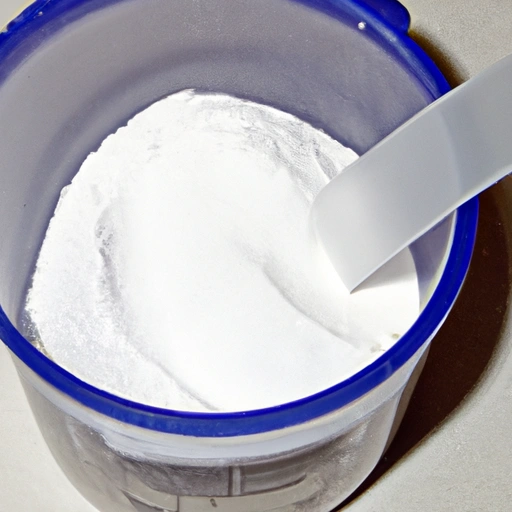Baking Powder
Description

Baking powder is a dry chemical leavening agent, a mixture of a carbonate or bicarbonate and a weak acid, which is used to increase the volume and lighten the texture of baked goods. It works by releasing carbon dioxide gas into a batter or dough through an acid-base reaction, causing bubbles in the wet mixture to expand and thus leavening the mixture. It is commonly used in recipes that do not include an acidic ingredient, as it contains its own acid component. Baking powder is available as either single-acting or double-acting. Double-acting baking powder is most widely used because it reacts in two phases and can stand for a while before baking.
Common uses
Baking powder is a common ingredient in many baked goods such as cakes, muffins, biscuits, and breads to help them rise. It's also used in batter for pancakes and waffles, as well as certain fried foods to provide a light, crisp texture.
Nutritional value
Calories
Baking powder is low in calories with about 5 calories per teaspoon (5 grams).
Protein
It typically contains a negligible amount of protein.
Fat
Baking powder contains no fat.
Carbohydrates
It consists primarily of sodium bicarbonate and may contain around 2.4 grams of carbohydrates per teaspoon (5 grams).
Vitamins
Baking powder is not a significant source of vitamins.
Minerals
It may contribute to your daily intake of sodium, with about 480 milligrams per teaspoon (5 grams).
Health benefits
While baking powder is not consumed in large quantities and therefore does not offer significant health benefits, its role in baking can help produce more easily digestible and palatable food items.
Potential risks
Ingesting large amounts of baking powder can lead to an imbalance of electrolytes in the body. Some baking powders contain aluminum compounds, which some people prefer to avoid over health concerns. Always use the proper amount as excessive use can leave a bitter taste in food and may affect the final texture.
Common recipes
Common recipes that include baking powder are cakes, cookies, biscuits, pancakes, and American-style muffins.
Cooking methods
Baking powder is typically mixed with dry ingredients before being combined with wet ingredients. It is also used in batter mixes and to aid the frying process for a crispy texture.
Pairing with other ingredients
Baking powder is often paired with all-purpose flour, sugar, eggs, and milk or water in various recipes. It can be combined with cocoa powder for chocolate cakes or with spices for flavored breads and pastries.
Summary
Baking powder is a versatile leavening agent that is crucial in many baking applications. It is known for its effectiveness in producing light and fluffy baked goods and is a staple in both home and professional kitchens around the world. While it does not contribute significantly to the nutritional content of food, its role in food preparation is invaluable. Due to its chemical properties, it should be used in the proper amounts and stored correctly to maintain its potency.